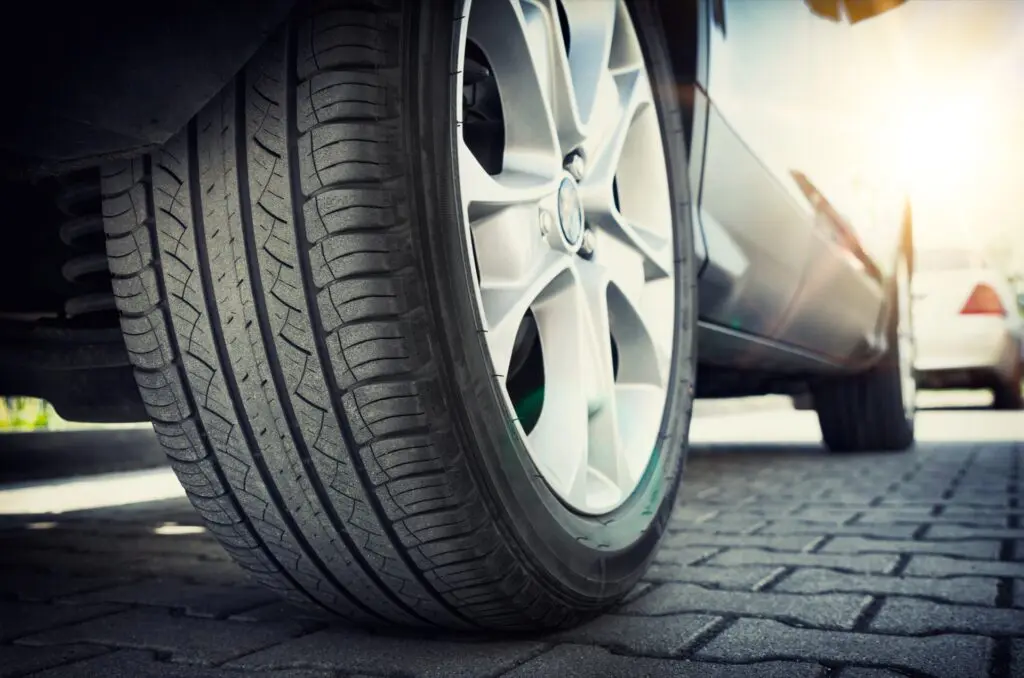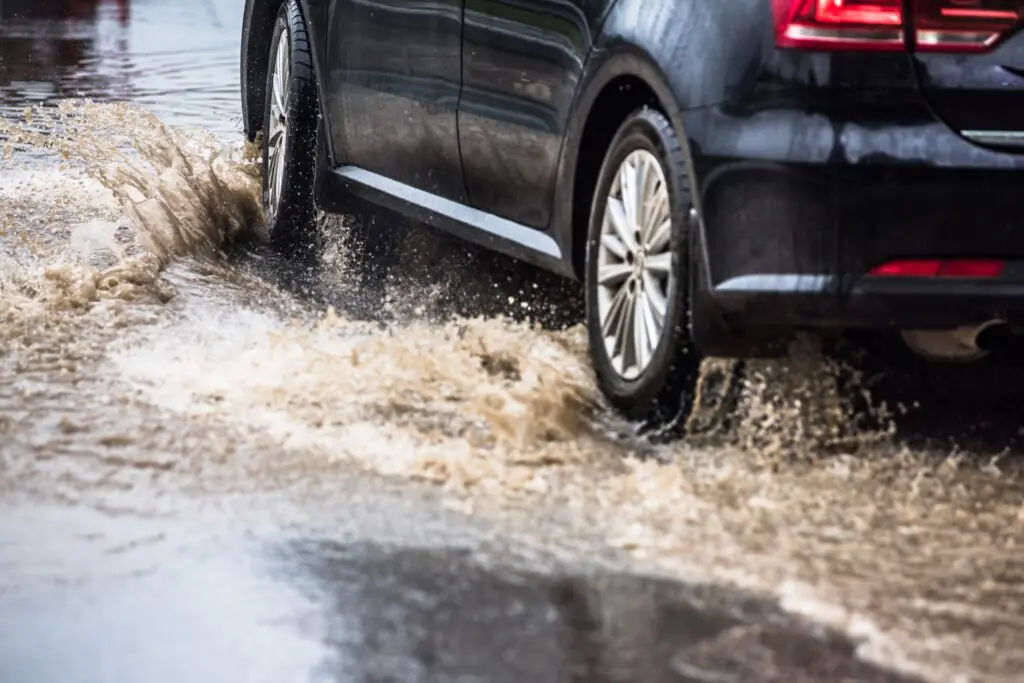Although not all tires have tire treads (like those used in F1 races), most do and are the reason why we’re not all sliding over the road like we’re all wearing greased-up socks on hardwood floors. In fact, there are actually several types of tire treads that help maintain as much grip as possible.
We explore each of the main tread types in more detail below.
Types of Tire Treads: Asymmetrical Tires
They may look strange, but asymmetrical tire treads are used on vehicles in a wide range of industries and applications.
This tread type has an asymmetrical pattern (shocker, we know) with two separate tread designs, one on the inner half and another on the outer half of the tire. This isn’t without reason though as both the inner and outer half of the tread pattern serves a purpose.
The inner half of the tread is designed to effectively direct water away from the tire. This is especially helpful in rainy climates as this prevents hydroplaning while driving.
Conversely, the outer half is designed to have harder, more rigid tread blocks that help vehicles maintain grip while going around turns. This half also is designed to handle drier sections of the road to provide a quieter ride.
Overall, this kind of tread is a frequent pick for performance cars but is also often suited for summer tires as well (especially in more stormy or wet locations). The tread offers excellent handling, stability in corners and offers excellent grip in wet conditions.

Symmetrical Tire Treads
Easily one of the most common tire tread types out there, symmetrical tire treads have been around for years and with good reason. They’re perfect for a wide range of passenger vehicles because they offer both a quiet drive and good overall grip.
These tires feature continuous ribs or independent tread blocks across the entire face of the tread, and both halves of the tire feature the same pattern.
This kind of tread has several notable benefits including:
- The quietest drive possible
- Long-lasting tires because each tire can easily be rotated
- Greater fuel efficiency due to the smoother ride
However, unlike asymmetrical tire treads, they can’t handle wet conditions as well and are therefore often better suited for drier climates.
Directional Tire Treads
Finally, directional tire treads only can roll in one direction, but get different benefits than the aforementioned other tire tread types as a result. Directional treads have lateral grooves that meet in the middle of the tire tread, resembling the shape of an arrowhead.
Complemented by the ability to only roll in a single direction, these tread types are designed to effectively push water, snow, and mud out of the way while driving to maintain the maximum amount of traction. As such, they also are great for dealing with hydroplaning as well.
However, because each tire has an associated direction it can roll in, they offer minimal tire rotation abilities so they can degrade slightly faster than both asymmetrical and symmetrical tire treads.
Overall, directional treads are perfect for any type of vehicle but are most commonly found on winter tires as they provide the best possible grip in snowy or icy conditions.

